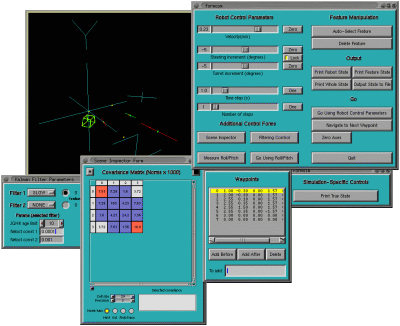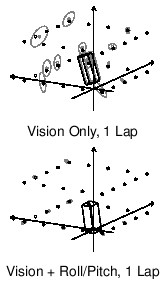|
Introduction
Scene
is a flexible open-source C++ library for sequential localisation and map-building.
Its highly modular design makes it suitable for applications in many different
domains, from robots navigating in 1D, 2D or 3D with arbitrary sensing
capabilities to single camera localisation (real-time structure-from-motion).
As is explained in the papers on my home page,
the sequential localisation and map-building problem (often referred to
as SLAM) is far from solved. However, we hope that this software, already
in use in combination with real robots on 3 continents (!), provides a
useful platform for further research.
The Scene distribution includes
a variety of pre-compiled, ready-to-run demo programs
(for Linux) which give an excellent feel for map-building in different
domains.
The ongoing goal of Scene is to
create a general software framework for SEQUENTIAL estimation of the positions
of moving bodies and the objects of which they are able to make sensor
observations in the environment. Scene implements a generalised full SLAM
approach, and is applicable to any problem where a moving sensor platform
makes measurements of stationary feature in the world.
Please let me know how you get on with
Scene
or get in touch if you have any problems: Andrew Davison,
ajd@doc.ic.ac.uk |



